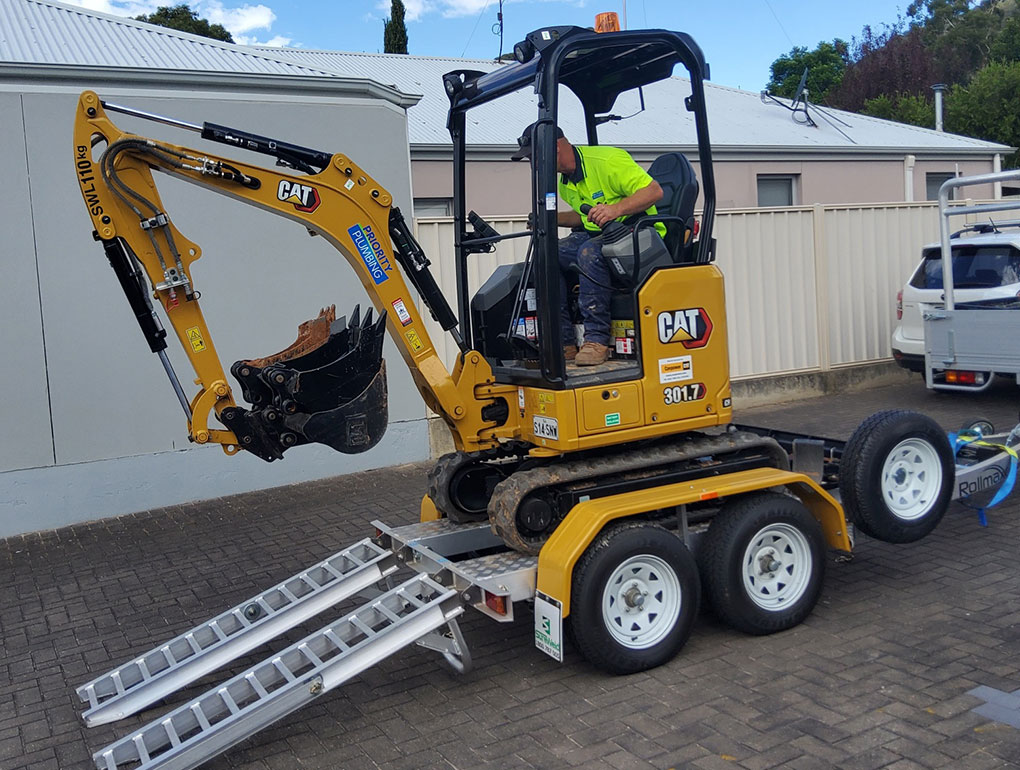PIPES DON’T LAST FOREVER
While they are made from materials that can last for several decades, in time, joints can come apart. The weight of the soil and the building above can cause buried pipes to crack and start leaking. Tree roots can infiltrate and damage the pipes. The problem is, when a leak is deep underground, you may not know you have one for a long time.
Hydrostatic testing is an effective way to find out if any of your pipes are leaking. These days, it’s being used to find leaking pipes in residential and commercial properties, especially those that are under slabs.
What Exactly Is Hydrostatic Pressure Testing?
Hydrostatic testing is used to find leaks in pressurized systems. Pipelines, plumbing, boilers, fuel tanks, and gas cylinders are commonly tested with this method. It can be done on your home’s sewer line to see if any leaks are present.
A hydrostatic test involves filling a system with a liquid. Once the system is filled with liquid, it is pressurized to test the system’s integrity. The next step is observation. A drop in the liquid level is a clear sign the liquid is coming out somewhere, even if no one can see the leak. This method of testing is generally non-destructive so long as the tester follows certain guidelines and there is adequate access to the drains to conduct the test.
The next step is to find out where the leak is. One option is to feed a video camera down into the sub-slab pipes to find the location of the leak. It also offers the ability to inspect the general condition of those pipes.
If there’s a water leak under the concrete slab your home sits on, the leaking water can seep into the foundation and cause cracks. If left to continue leaking for an extended period, this can weaken the overall structure of your home and can even result in cracks in the walls. Make it a point to regularly check your foundation for cracks and other signs of moisture.
Some signs that may indicate that you have broken, or damaged underground pipe work include:
- Efflorescence – a white salty build up on concrete, paths, paving and walls.
- Timber floors rotting, warping, or cupping.
- A dank musty smell emanating from areas of the home.
- Mould or mildew forming
- Staining of carpet and floor coverings
- Rusty pipes
- Sagging ceilings or cornices starting to crack or move.
- Timber door frames and architraves swelling or out of alignment.
- Cracking of brickwork, concrete, or external perimeter paths
- Areas of the garden that are particularly green or experienced rapid growth or constantly damp.

If you believe you have an underground water leak in your home, and would like the matter investigated, please contact Priority Plumbing today. Our trained office staff can discuss the options with you and suggest the best method of testing to identify and ease your concerns. Priority Plumbing can also advise on the best course of remediation which may include our no-dig drain relining option saving unnecessary excavation of floors and finished surfaces.
Detecting slab leaks is a major part of our business. That is why we use hydrostatic pressure testing. It helps us find and fix these hidden leaks without the need for unnecessary excavation and mess!
